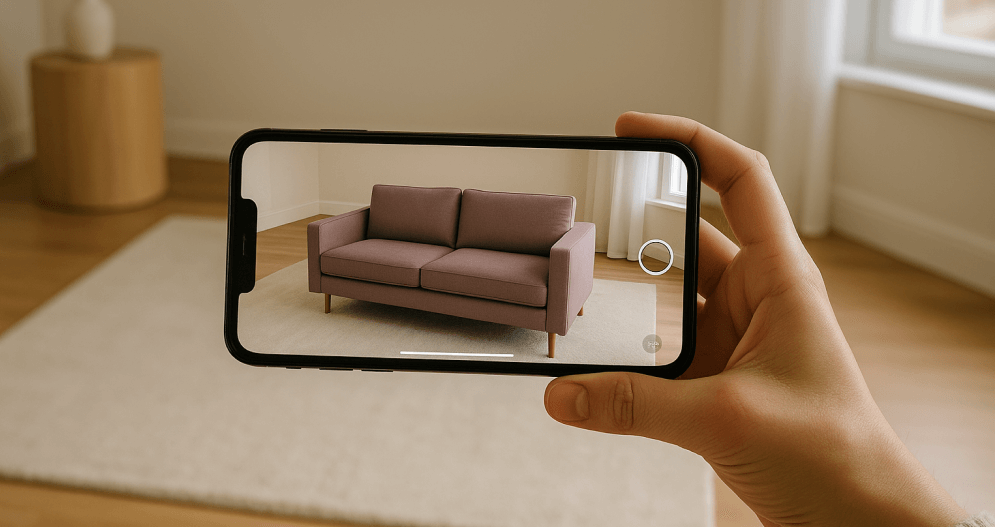3D furniture visualization has transformed the way retailers, designers, and manufacturers present and sell their products. Instead of relying on flat images or costly traditional photoshoots, businesses can now offer a vivid, interactive view of furniture in real space, helping customers visualize pieces in their own room layout and make confident purchase decisions.
Let’s explore how this technology works, who it benefits, and how to start creating immersive furniture experiences that boost conversions, cut costs, and improve customer satisfaction.
Why 3D furniture visualization is a game-changer
Static product images once ruled online catalogs. But they fall short when shoppers want to see how a sofa fits into their room shape or whether a dining set suits their lighting conditions. That’s where 3D furniture visualization steps in, bringing furniture to life with realism, flexibility, and interactivity.
Using a room planner tool with 3D assets, customers can view furniture models from any angle, explore different styles and fabrics, or even place furnishings into their actual space using augmented reality. It’s not just visually engaging, it’s a more innovative, faster, and more personalized way to shop.
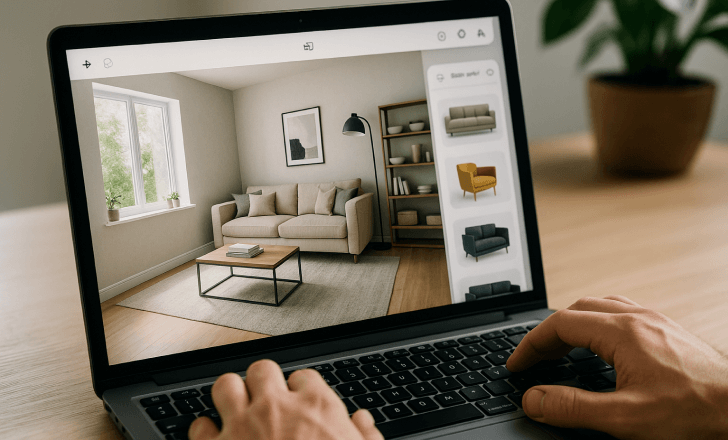
Who benefits from 3D visualization technology?
Furniture retailers and e-commerce brands
Retailers using 3D furniture models can showcase their collections in richer detail, from material textures to scale and placement. This increases online sales and reduces returns, as buyers better understand the final product.
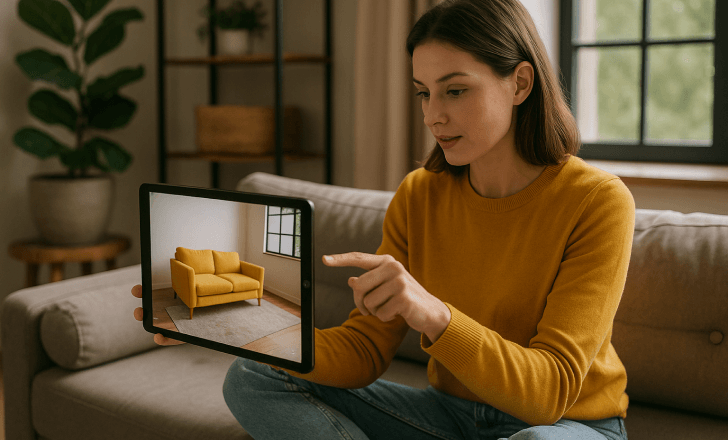
Interior designers and decorators
Designers can add furniture to floor plans, experiment with different styles of furniture, and offer clients a clear preview of how rooms will look before a single item is purchased.
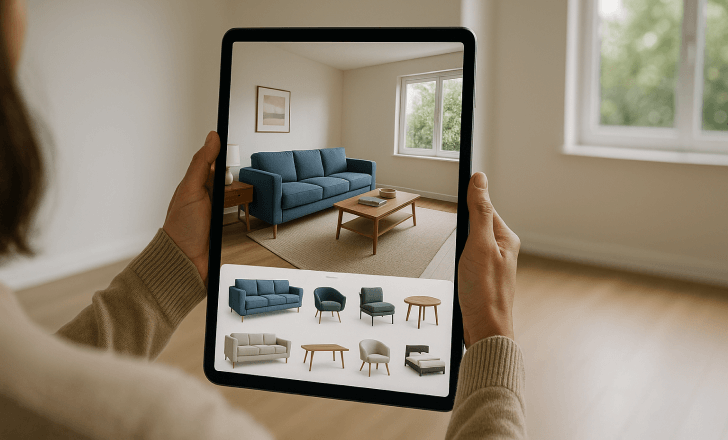
Manufacturers and marketers
3D furniture assets are reusable across multiple products and campaigns, from catalog creation to marketing materials. They save time, reduce costs, and support customization options at scale.
Key advantages for your business
1. Increase conversion rates
Customers who can visualize products in their own space are more likely to buy. Studies show that interactive 3D models outperform static images in boosting engagement and conversion.
2. Reduce reliance on physical prototypes
Traditional photoshoots and sample builds are expensive and time-consuming. With digital assets, you can preview new designs or entire furniture collections without building a single unit.
3. Enable real-time customization
Let shoppers adjust color, fabric, dimensions, or positioning in real time. This empowers users and adds a feeling of ownership, especially important in high-consideration purchases.
4. Improve customer experience
You remove friction from the buying process by offering intuitive interfaces and immersive experiences. Customers can explore products at their own pace, with all the context they need to decide.
5. Enhance your marketing materials
From lifestyle renders to background images for your website or store, 3D visualization supports dynamic content creation. It keeps your brand fresh and visually consistent across platforms.
How does 3D furniture visualization work?
At its core, 3D furniture visualization involves turning digital 3D models into interactive experiences. These models replicate real-world furniture pieces in shape, texture, and scale. Once uploaded to a platform like RealityMAX, they can be:
- Placed in virtual rooms
- Rotated and zoomed in on
- Rendered under different lighting conditions
- Viewed in augmented reality through mobile devices
Some tools even let you import a floor plan or use a mobile application to scan an empty room, automatically adapting the visualization to your room layout.
Bringing rooms to life: Practical use cases
Designing with a room planner
Users can drag and drop furniture into a digital room planner to explore different setups. This is especially useful for visualizing how multiple products interact, or whether items fit in a particular room shape.
Using augmented reality in a real space
AR bridges the gap between the screen and the physical world. Shoppers simply click a button to view a product in their own living room, office, or bedroom through their smartphone camera, seeing how it looks and fits instantly.
Creating visual content without traditional photoshoots
Need marketing visuals fast? Skip the studio. With 3D furniture visualization, you can generate photorealistic product images or lifestyle scenes, adjusting textures, materials, and lighting as needed.

Selling in-store with immersive experiences
Even physical store visits benefit. Retailers can set up kiosks where customers configure furniture options, explore the full catalog virtually, and see personalization in real time.
What makes a great 3D furniture visualization platform?
Not all visualization tools are created equal. For a solution to deliver real business value, it should offer:
- An intuitive interface so anyone can create without a learning curve
- Support for multiple furniture models and materials to match your collection
- Augmented reality compatibility to connect the virtual and real
- Custom branding options to reflect your style and tone
- Fast rendering and responsive tools for a smooth user experience
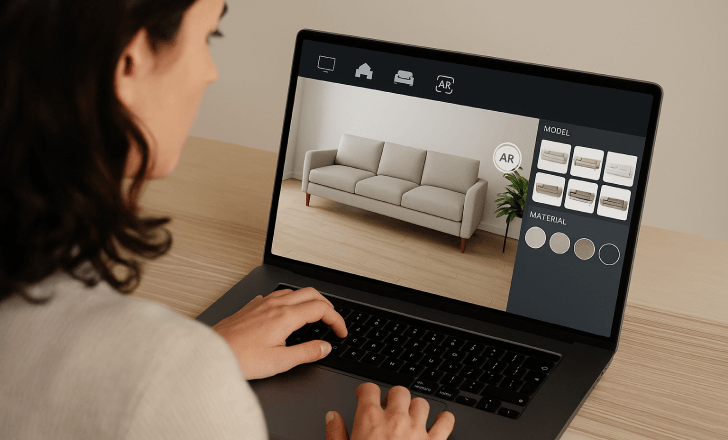
How to get started with 3D furniture visualization
Ready to enhance your customer journey with 3D? Here’s what you’ll need to begin:
- Gather your furniture assets: If you don’t already have 3D models, many platforms offer scanning or modeling services.
- Choose the right software: Opt for a platform like RealityMAX that supports 3D product visualization, customization, and AR deployment.
- Upload and customize: Add product details, adjust lighting, and create scenes for your site or marketing use.
- Embed or share: Publish your interactive models on your website or integrate them with your e-commerce platform.
- Test on mobile devices: Ensure users can interact seamlessly on smartphones and tablets, where most customers browse today.
What are the most common 3D furniture visualization mistakes?
Even great tech can fall short if misused. Watch out for these pitfalls:
- Overloading scenes with too many furnishings can overwhelm the user or slow performance.
- Inconsistent styles across product images reduce brand coherence.
- Poor lighting or texture settings that make 3D models look unrealistic or unappealing.
- Lack of context or scale, leaving users unsure how items fit in their space.
Avoiding these ensures that the final product feels polished, helpful, and trustworthy.
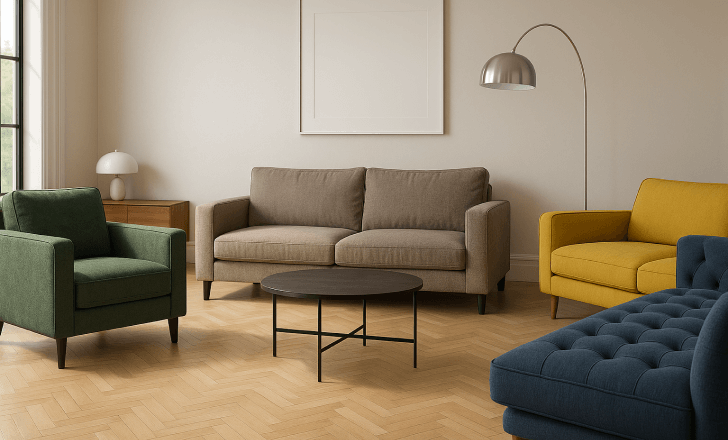
What’s the impact of 3D visualization on customer trust?
Seeing is believing. When customers can inspect furniture from all angles, change materials, or place it in their own space, they’re far more likely to trust the product and your brand. It eliminates doubts, shortens the decision-making cycle, and contributes to better reviews and fewer returns.
How does 3D furniture visualization support sustainable practices?
By minimizing the need for physical prototypes and printed catalogs, 3D workflows help reduce waste and carbon emissions. Digital previews also reduce returns, which cuts down on packaging, transportation, and reverse logistics.
For companies focused on sustainable products and responsible production, this digital-first approach is not only cost-effective but also aligned with their values.

Can 3D models be reused across product collections?
Absolutely. A well-made 3D model can be adapted to showcase different fabrics, colors, or configurations. You can swap materials, change backgrounds, or create tailored scenes for various campaigns without starting from scratch.
This flexibility gives your team the ability to test new ideas, launch quickly, and iterate as needed.
What does the future hold for furniture visualization?
Expect richer interactivity, smarter AI-driven customization, and tighter integration with e-commerce and room planner tools. As mobile devices and AR adoption grow, even more shoppers will expect to visualize before they buy.
Companies that invest now are not only meeting today’s expectations—they’re future-proofing their customer experience.
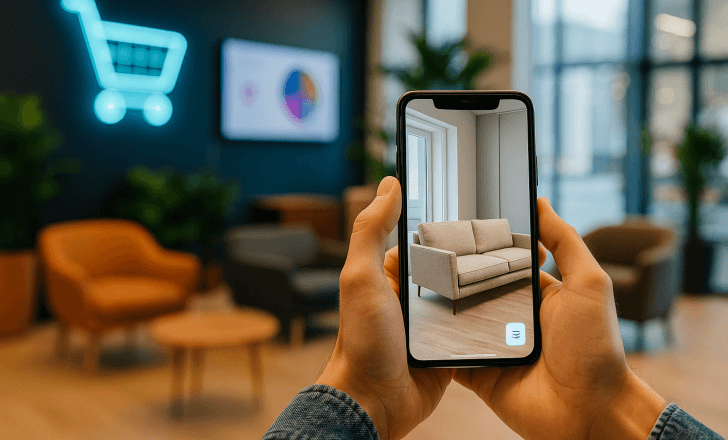
How can I visualize furniture in my own space?
To visualize furniture in your own space, you need a platform that supports augmented reality (AR) or room planner functionality. With AR, people scan their environment using a mobile device, and the 3D furniture model is projected onto their real surroundings. It’s like trying the product without lifting a finger before buying it.
Platforms like RealityMAX make this process seamless. After selecting a product, customers can click a “View in your room” button to launch AR mode. The furniture adapts to their room’s dimensions, lighting, and angle, helping them assess whether it fits their style, space, and other furnishings.
This is especially useful when evaluating large items like a sofa or dining table, or when trying to match finishes and fabrics to an interior palette.
What tools let me customize a room layout with 3D furniture?
Look for platforms that include a room planner tool. These tools let users drag and drop furniture pieces into a digital replica of a room. You can start with a pre-made template, upload a floor plan, or create a custom layout based on your room shape.
A great room planner should support:
- Multiple furniture models and product variations
- Precise adjustments to position and dimensions
- Lighting options to simulate different conditions
- Background images or empty room templates for context
Some tools even allow users to switch between top-down and 3D perspective views, making it easier to arrange items exactly as they would appear in real life.
RealityMAX integrates room layout planning and 3D furniture visualization in one intuitive interface, which is ideal for both consumers and professionals.
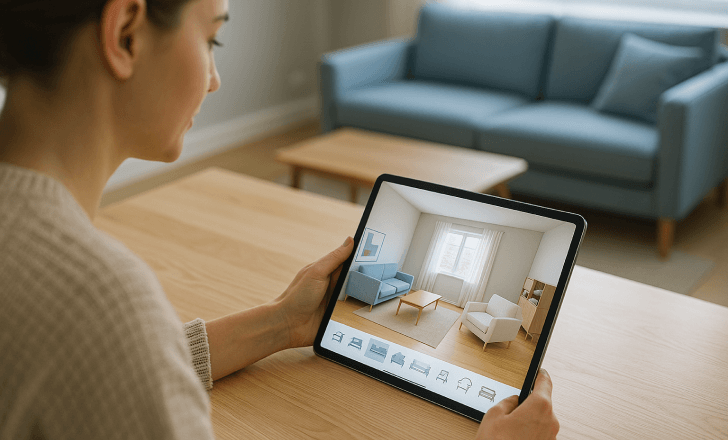
How do I use 3D furniture models for online sales?
To use 3D models for e-commerce, you’ll first need high-quality 3D representations of your furniture collections. These models should accurately reflect size, shape, materials, and textures.
Once uploaded to your product pages via a platform like RealityMAX, users can:
- Interact with the product from 360 degrees
- Zoom in on details like stitching or materials
- Use AR to see the item in their home
- Access annotations that explain details or the product variants
This immersive experience gives online buyers more confidence, especially when purchasing big-ticket items. The result? Higher conversion rates, reduced returns, and a more engaging customer experience.
Bonus: These same assets can be reused across marketing materials, store displays, and mobile applications.
What’s the best way to add furniture to my product images?
The best way is to render your product into customizable environments using 3D visualization software. Instead of photoshopping static images, you can work with digital scenes where lighting, textures, camera angle, and materials are fully editable.
This approach allows you to:
- Add furniture into lifestyle settings that reflect your brand
- Easily swap different styles or combinations of furnishings
- Create visuals tailored to specific audiences or campaigns
- Maintain consistency across your site and social channels
RealityMAX enables you to generate studio-quality renders without a physical set or photographer, with the help of AI. You can use background templates or design your own, creating sharp, shareable visuals for your website, catalog, or ads.
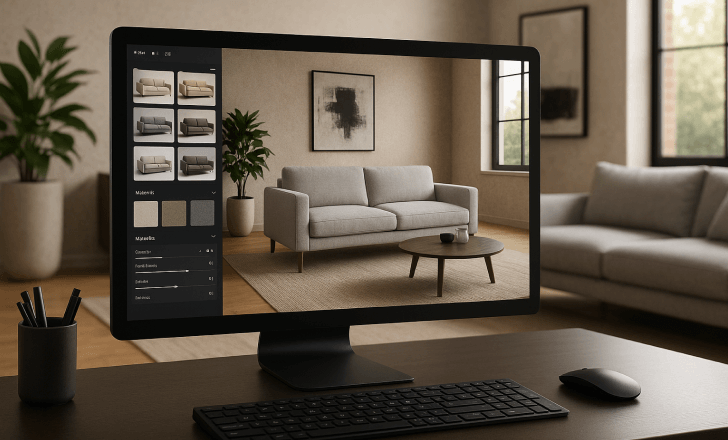
Can I use 3D furniture visualization on my mobile application?
Absolutely. A key benefit of modern 3D visualization platforms is mobile compatibility. Whether you’re embedding models into your mobile store or building a native app, users expect seamless performance on their smartphones and tablets.
Using a platform like RealityMAX, you can:
- Embed interactive models directly into your mobile storefront
- Let customers preview furniture in their space with AR
- Offer real-time interaction even on small screens
- Maintain fast load times and responsive interfaces
A mobile-first experience not only increases accessibility, but it also drives engagement at the critical decision-making moment, wherever your customers are.
